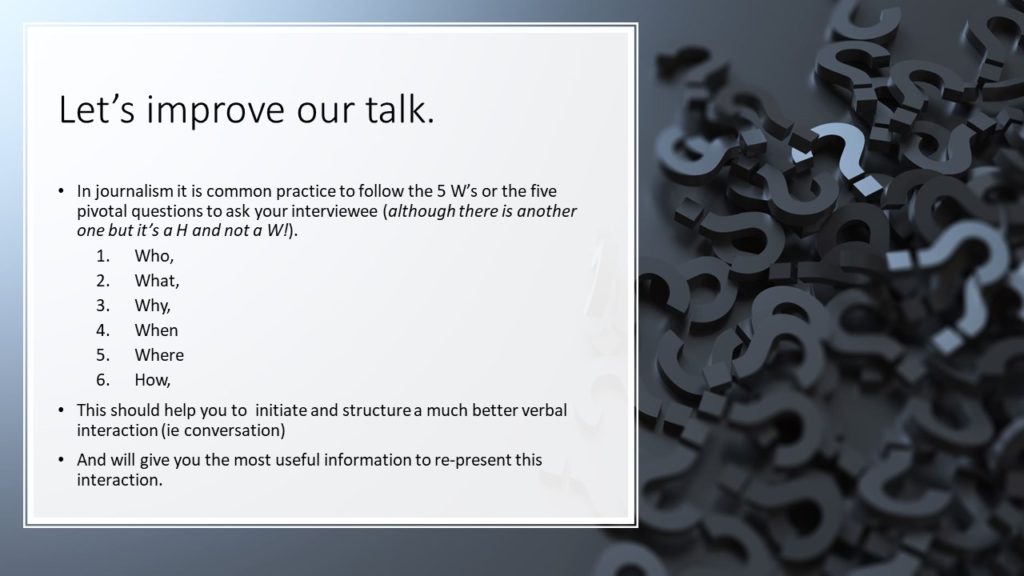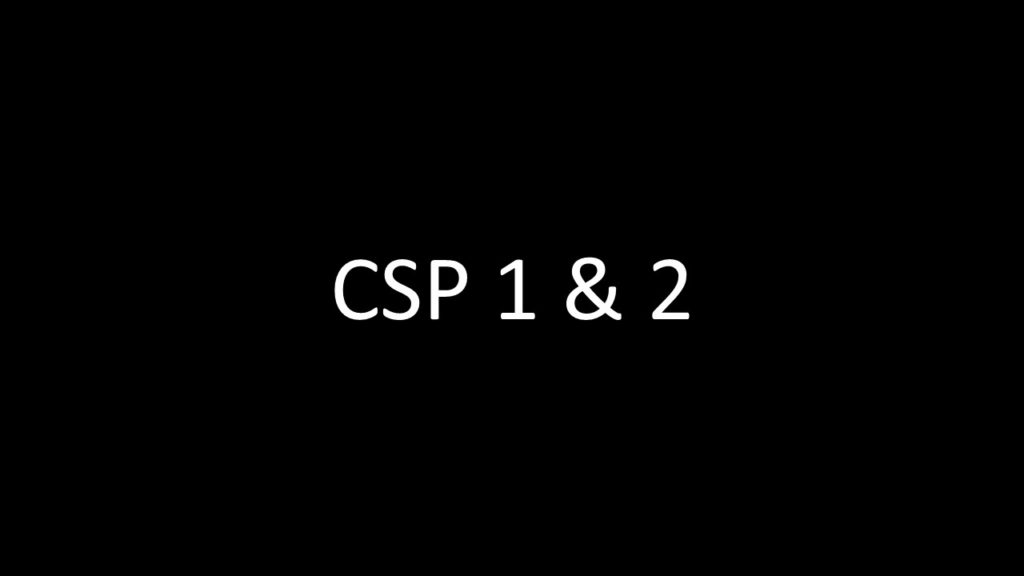
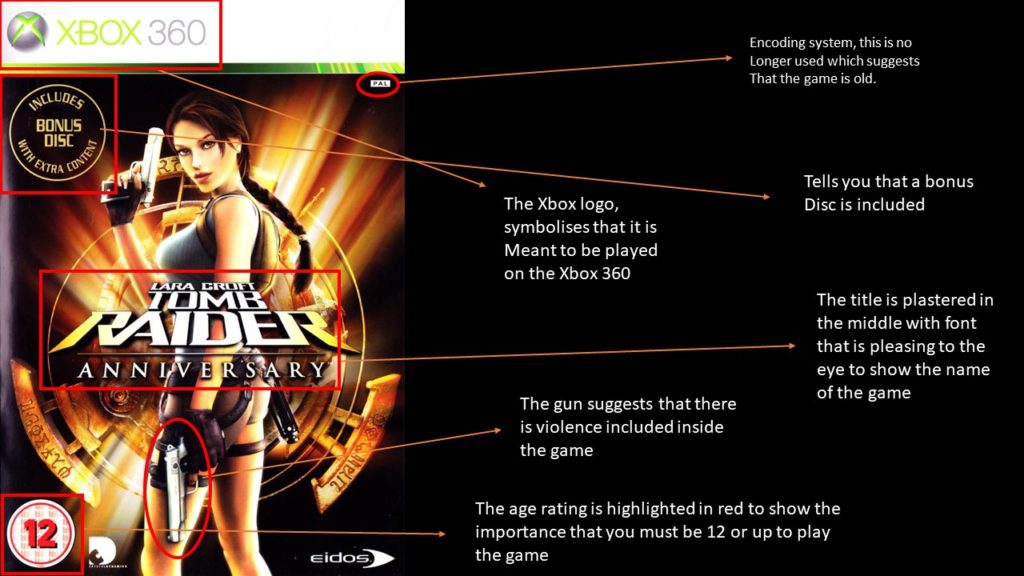
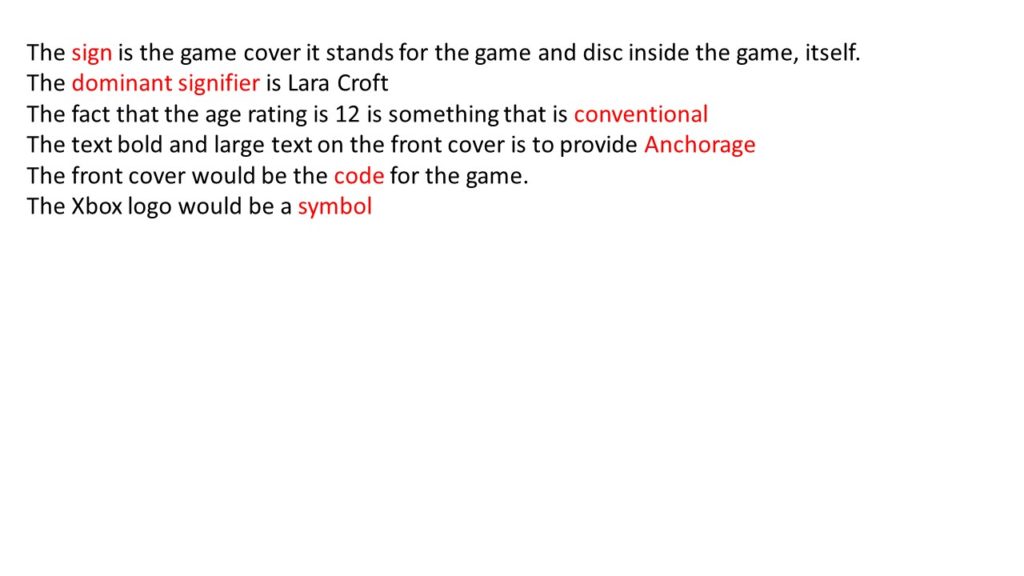

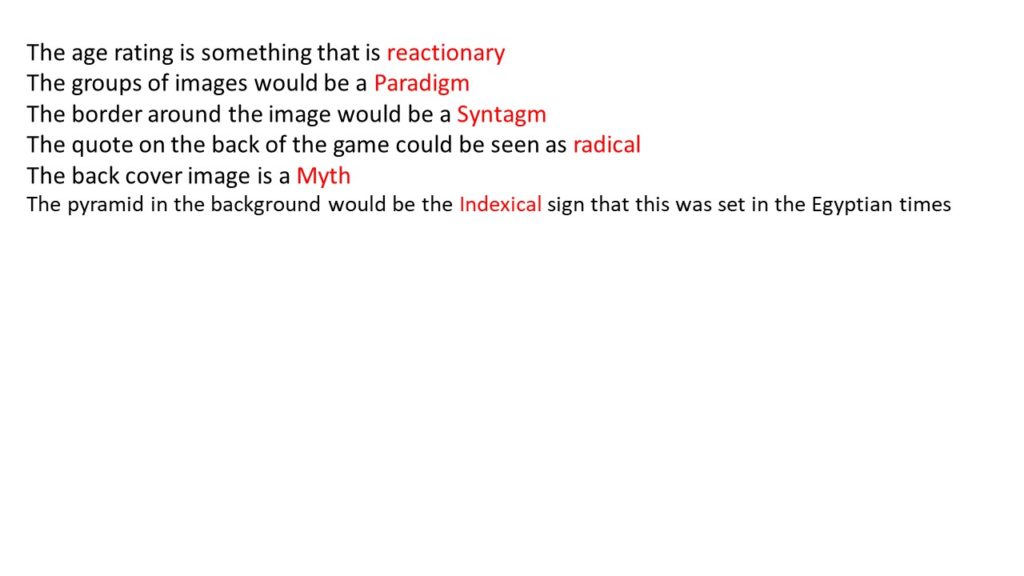
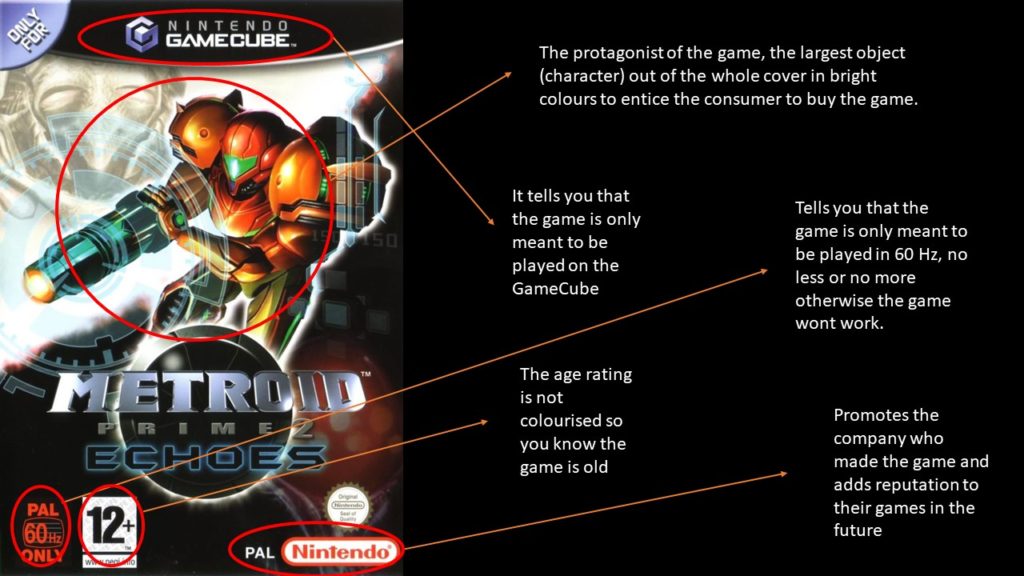
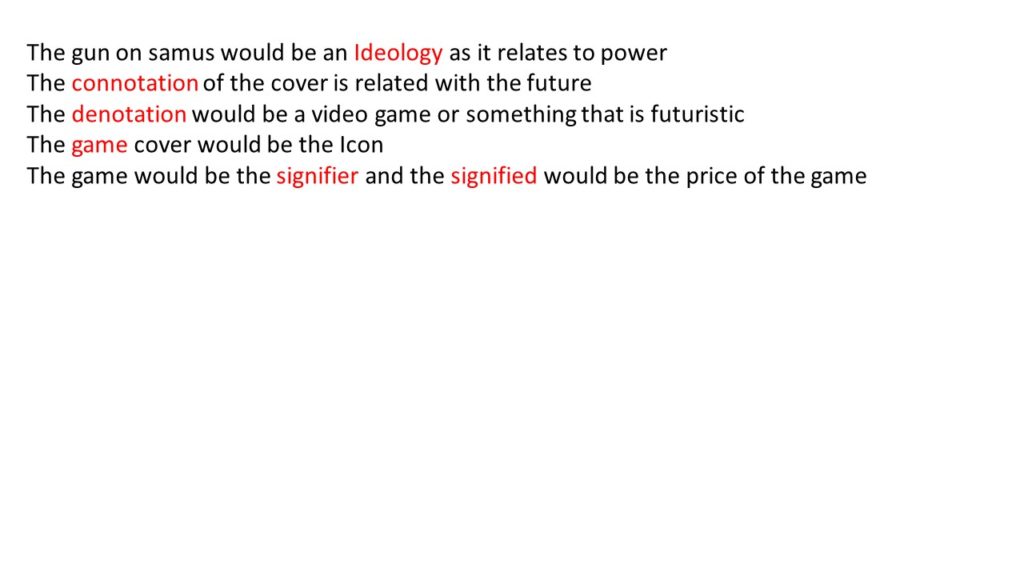








During your media course there will be a number of media texts that you are required to study, which COULD be in your final A2 exams. They are called CSP’s (Close Study Products). For more information from the board follow this link or open the linked document below.
Make 3 powerpoint slides. One has Tomb Radier cover, the second has Metroid cover, the last has the back cover of Tomb Raider. Identify as many different elements in each cover as possible. In other words, what can you see? Label everything you can see eg main image, age rating, manufacturer name etc. Identify all of the visual elements that support the main image eg colour boxes, background colours, textures, shapes, hard lines, other random / arbritary elements. Save you ppt slide as a JPEG and upload to the blog.
Use the following categories: Exam Prep, Semiotics, Metroid, Tomb Raider,


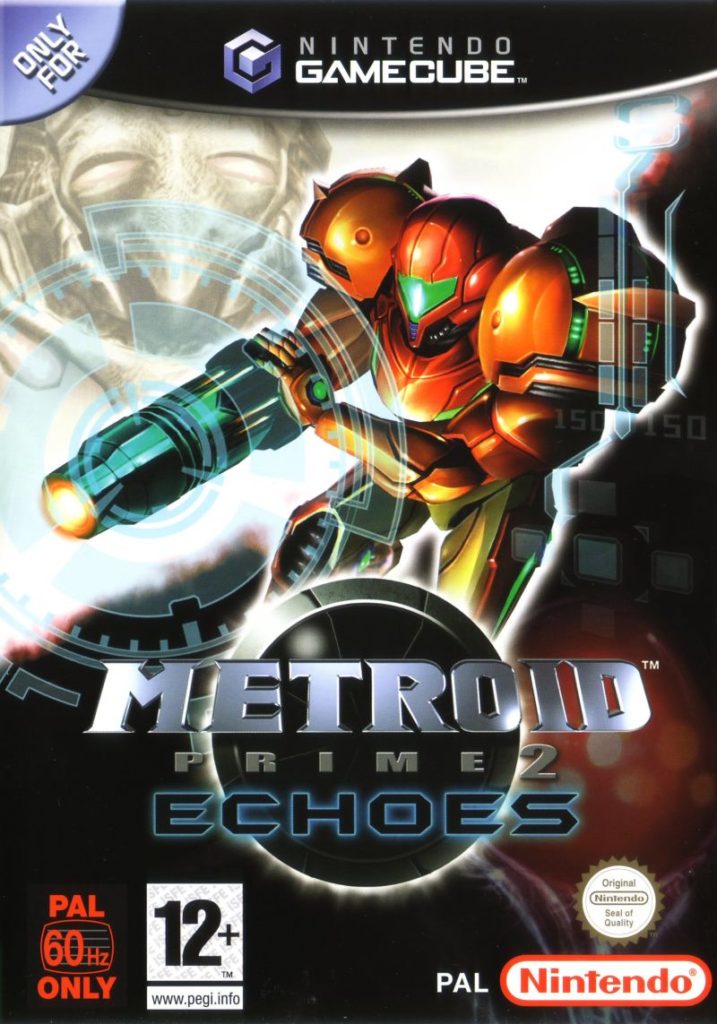
For example, this article is headed “My childhood crush on Samus is probably why my ex looks like her“ seems to bring up some interesting ideas about our relationship between fictional representation and our factual lives.
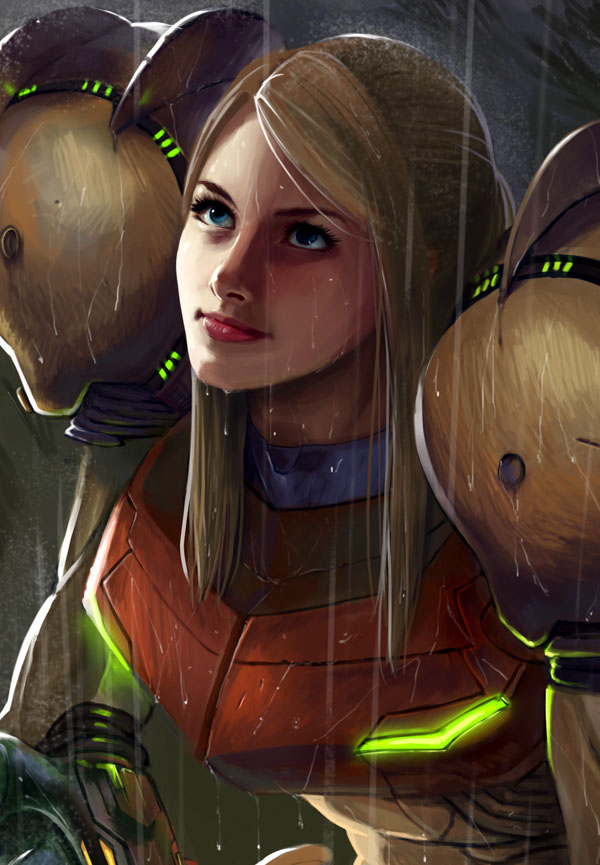
As part of your task above, apply the key semiotic terms (the 19 definitions you have previously completed). In other words, you should be able to break down all of the elements that have been used in each game cover as well as recognising what function or concept they are fulfilling.
For example, A is an iconic signifier because it resembles B. C is used as an indexical link towards D. E is a symbolic signifier and is used to . . .
Similarly, make sure you are clear as to whether the elements that are put together are radical or reactionary. In other words, what kind of representation is presented?
Essentially what you are producing is a TEXTUAL ANALYSIS. That is you are analysing a media text. This means that you are identifying the individual specific elements (ie the Language of the products) towards what those elements mean when they are put together (ie the Representation of the product).
It may be useful to look at some (similar) work carried out by Feminist Fequency, for example this post (which includes the video below) about body language and The Male Gaze.

CS Pierce
semiotics- the study of signs
iconic sign(a sign that looks like the object)- earth, table, people
index sign(a sing that has a link to the object)- the word “media”, the shading behind the words, the numbers
symbolic sign(a sign that is arbitrary or random like to its object) – black lines, little table logo, other logos

Iconic signs: the sky looks like the sky, the sign post looks like a sign post, the clouds look like clouds
Indexical signs: social media logos are linked to the idea of new media, the pastel colours are linked to happiness, the font style is linked to being fancy
symbolic signs: the word ‘media’ has been decided as society to link, the green curvy box thing, and the facebook logo we have decided this is what we will recognise the app by.
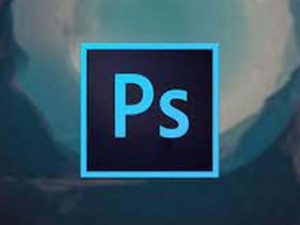
Ok to get you started on some practical work, I will introduce you to Adobe Photoshop. First of all open up photoshop (short cut on your start menu) and register with your school email.
You will be able to use Photoshop outside of school! Yay! Try it and let me know if you are encountering problems.
To get you going please produce a banner / blog header. You will need to produce a document that is 1260 px / 240 px, 150 dpi, transparent background. Save this file as a PSD in your home folder / Media A level folder.
PLEASE NOTE THAT YOU WILL NEED TO SAVE YOUR FINISHED WORK AS A (COPY) JPEG.
Upload your finished JPEG to a new post on your blog – categorise it as production & induction – you will get a mark for this.
If you are a whizz at Photoshop then off you go, otherwise I help everybody to:
If you have finished your banner (and saved it as a JPEG on your blog) then produce a MASTHEAD as an extension activity. A masthead is the title of of newspaper or magazine. They are unique in design and generally communicate the theme and style of the publication.
You will need to measure some real products and produce a photoshop documents that is the actual size (in centimetres). As this would be a real print product make sure you resolution is 300 dpi.
Ok you must be a super Adobe Photoshop whizz if you are here!! If so, you task now is to produce the front page of your newspaper / magazine – the (made-up product) that you just created the masthead for (so you would import your masthead as a separate image / layer) and that you wrote your article for.
Make sure the front cover makes a link to your article (summer task).
As ever, post up as a JPEG on to your blog.
Enjoy this process – theory next!!

SUMMER TASK: Write up the following in a single post. The aim is to link your summer task with the assessment criteria for your A level coursework (NEA):
Please produce a media timeline that gives a brief overview of the development of different forms of media. Post up as a JPEG / image.
Make a new post with a table that has 10 rows and four columns. Populate the second column with the 9 media forms that are required study for this AQA Media studies A level. You can find a list of the 9 forms that are specifically stated by the board in the syllabus on page 9. You can find a link to the syllabus in the top menu bar of this blog.
in the 3rd column write 3 characteristics of each media form. In the 4th column provide an example of each form.
Publish your post and categorise it as ‘exam’ and ‘induction’





